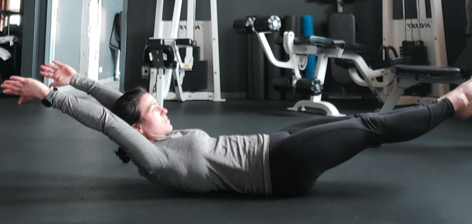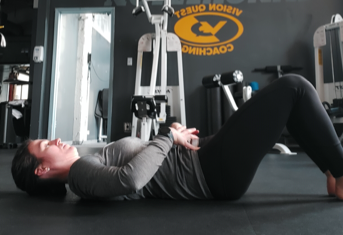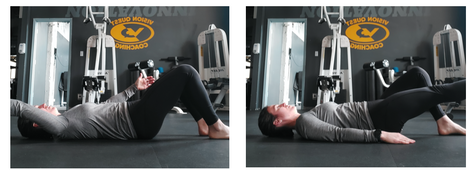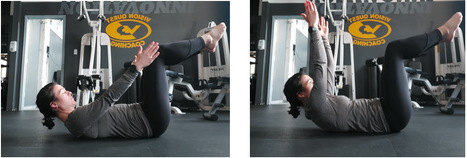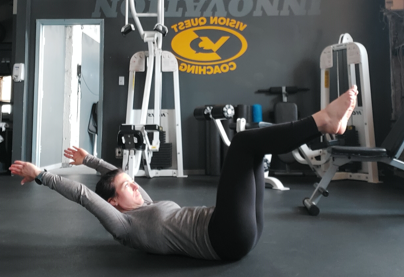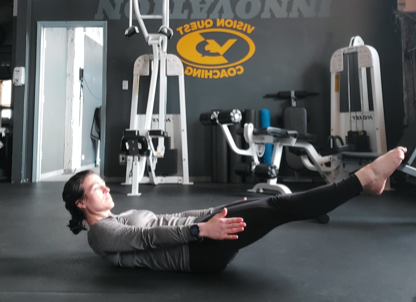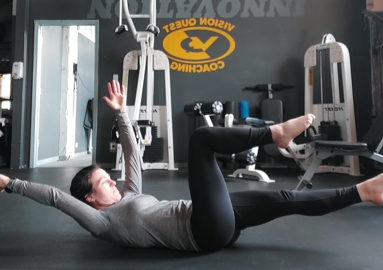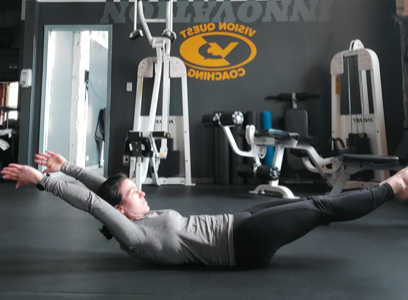Extended lower back: If you are unable to maintain your low back in contact with the ground, you should not continue with the hollow hold or progression exercise at that time. You may either be too fatigued to complete the exercise that day or you may need to scale back to a previous variation until you have developed enough strength and control at that level.
Flexed knees and elbows: The goal of the hollow hold is to maintain tension of the core with extremities fully extended. If you are unable to maintain knees and/or elbows in full extension, scale back to one of the previous progressions until you have developed the strength and control you need at that level.
Extended Neck: Deep neck flexor muscle weakness is extremely common. Inability to maintain the chin tucked toward your throat/chest can lead to muscle strain. Depending on how weak your neck muscles are, this may take more time than your abdominals to develop. Practice earlier progressions to develop neck muscle endurance in the tucked position before moving to the next level and increasing the load.
Holding your breath or Valsalva: THIS IS IMPORTANT AND APPLIES TO MALES & FEMALES. For the sake of your innards and pelvic floor muscles, it is important to avoid holding your breath, bearing down (pushing out), or distending your stomach. If you are really struggling to breathe or feel yourself pushing out, then it would be wise to scale back to the previous progression. Focus on developing your endurance at an easier progression while maintaining a normal breathing rate with less effort.


